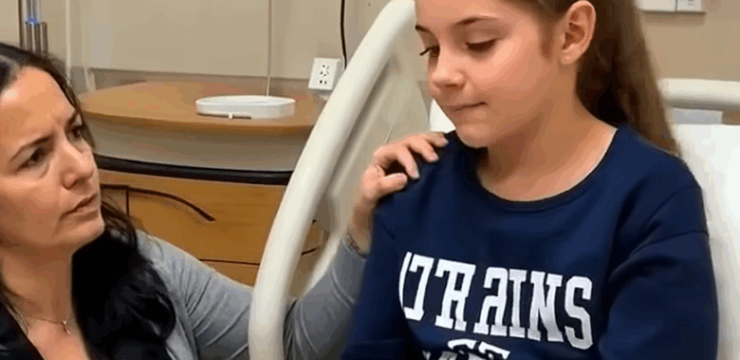When was the last time you looked closely at your fingernails—not just to check for dirt or chipped polish, but to actually examine the tiny half-moon shape at the base of your nails? That pale, crescent-shaped area is called the lunula, and while it might not seem important, it can actually offer surprising insight into your overall health.

Though many people don’t think twice about whether they have a visible lunula, paying attention to its presence—or absence—might help spot potential health concerns before they become serious. In general, the lunula appears as a whitish, semi-circular mark near the base of the fingernail, right above the cuticle. It’s most prominent on the thumbs and may not be as visible on the smaller fingers, but that doesn’t mean it’s not there.
According to various health experts, a bright, well-defined lunula is often linked to good health, vitality, and a balanced body. The color, shape, and size of the lunula can reflect how well different systems in your body are functioning. A healthy lunula is typically whitish and occupies about a fifth of the nail area.
It should be well-shaped and noticeable, especially on the thumb. However, if you notice that your lunula has become smaller or seems to have vanished altogether, it might be your body’s way of alerting you to an underlying issue. For example, the lunula on the thumb is considered one of the most important. If this half-moon shape is missing or barely visible, it could point to emotional stress or mental health issues such as anxiety or depression.
It may not mean something is wrong immediately, but it’s definitely worth keeping an eye on—especially if you’re already feeling overwhelmed or out of balance. Moving down the hand, the absence of a lunula on the little finger is often linked to concerns with the digestive system or issues involving the pancreas, liver, or reproductive organs in women. If the lunula on this finger suddenly disappears, it could suggest there’s a disruption in how your body is processing nutrients, managing hormones, or handling toxins.
A diminished lunula on the middle finger has been associated with hypertension, or high blood pressure. Since the middle finger is believed to reflect circulatory health, changes in this lunula might be one of your earliest signs to check your blood pressure or reevaluate your cardiovascular health. Likewise, if the lunula on your ring finger is barely there or completely missing, it may suggest a thyroid imbalance. The thyroid plays a key role in regulating metabolism, energy, and mood, so changes in the lunula on this finger could be a subtle signal that something is off. Of course, it’s essential to note that these observations should not be used as a substitute for medical advice or diagnosis. The presence or absence of a lunula alone isn’t a confirmation of illness, but rather one of many possible signs your body gives you. Factors such as genetics, age, lifestyle, and even your level of physical activity can all influence how visible your lunula appears. For instance, athletes or people with highly active metabolisms may have more prominent lunulae, while sedentary individuals may have smaller or less visible ones. Diet and environmental conditions also play a role. A diet lacking in essential vitamins and minerals could affect your nail health, just as exposure to toxins or extreme temperatures can. The key takeaway here is that your body has many ways of telling you how it feels, and your nails are just one more avenue of communication. Monitoring changes in your lunula over time—especially if you notice a pattern or sudden disappearance—can help you take a more proactive role in your health. If anything seems off, it’s always a good idea to bring it up during your next checkup. A healthcare provider can run proper tests to determine whether those nail changes are linked to a larger issue. In the end, while the lunula may be small, it holds big clues about your internal well-being. Taking a few seconds to examine it from time to time could provide valuable insight into what’s going on beneath the surface—and potentially help you catch issues early before they develop into something more serious.





